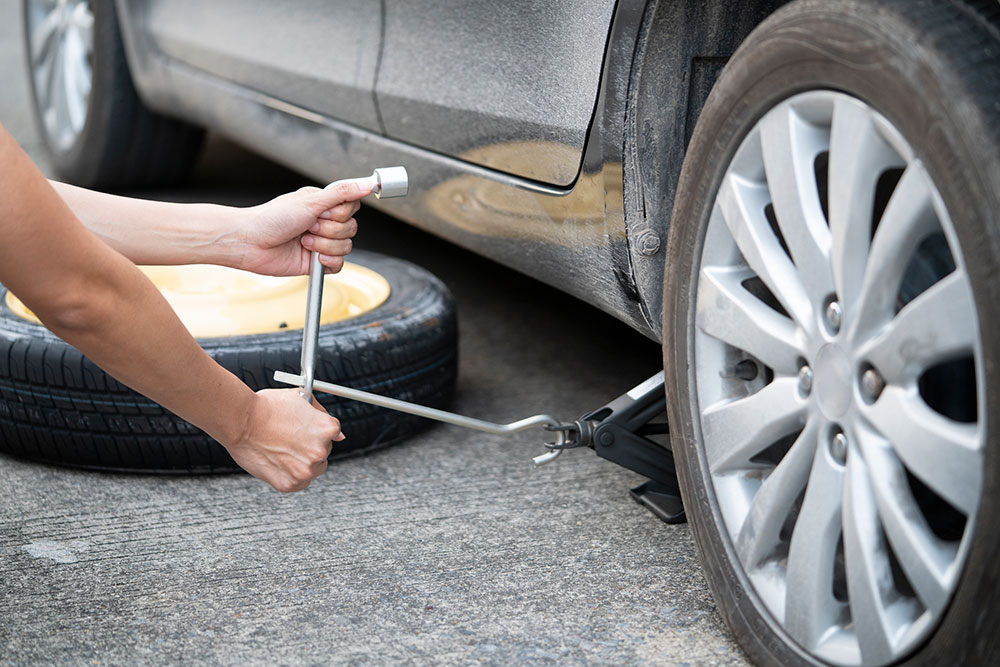Keep safe while using a car jack
Incorrect use of a car jack can cause life-threatening injuries.

The Australian Competition and Consumer Commission (ACCC) reports more than 160 people suffer injuries each year while using car jacks.
Injuries range from amputation to crush injuries and can cause deaths.
Most incidents involve men and a vehicle being lifted or supported in the wrong way.
The ACCC said home mechanics were most at risk of this type of death or injury.
Here’s some tips to help you avoid adding to those gruesome statistics.
Jacks sold in Australia, including those supplied with a new car, must comply with AS/NZS 2693.
Your vehicle’s original equipment jack is primarily designed to raise the vehicle for wheel changing.
To stay safe and avoid vehicle damage, always follow the instructions for use (see owner’s manual) including use of the designed jacking points, work on hard level ground and never get under the jacked vehicle.
A hydraulic trolley jack is generally preferred for other service and repair work involving vehicle lifting and must comply with AS/NZS2615.
Trolley jacks should only be used on a hard, level surface and it must be free to roll as the vehicle is raised/lowered to prevent the vehicle slipping off the jack.
Chocks should be placed under the wheels that remain on the ground to prevent the vehicle rolling.
And only lift under the designated lifting point to avoid vehicle damage or the jack slipping.
As with any jack, never exceed its rated lifting capacity.
Using a standards-compliant jack of any type ensures it meets the required safety standards.
Never get under a vehicle supported only by a jack.
Always support it on jack stands of suitable capacity for the vehicle that comply with AS/NZS 2538.
Never use bricks, timber or concrete blocks for support.
An alternative to jacking and stands if wheels don’t need removal is a pair of portable ramps compliant with AS 2640.
Related topics
Things to note
The information in this article has been prepared for general information purposes only and is not intended as legal advice or specific advice to any particular person. Any advice contained in the document is general advice, not intended as legal advice or professional advice and does not take into account any person’s particular circumstances. Before acting on anything based on this advice you should consider its appropriateness to you, having regard to your objectives and needs.
Insurance Products (excluding Travel Insurance) are issued by RACQ Insurance Limited ABN 50 009 704 152 (RACQI) and arranged by its agent, RACQ Distribution Services Pty Ltd (RDS) ABN 35 116 361 650, AFSL 567130 and RDS' authorised representatives (including RACQ Operations Pty Ltd ABN 80 009 663 414, AR No. 234978 (RACQO). Conditions, limits and exclusions apply. RDS and RACQO are in the RACQ group of companies. One of the companies in the RACQ group of companies has a minority shareholding in RACQI.
RDS and RACQO have not taken your personal objectives, circumstances or needs into account when preparing advice regarding insurance products and you will need to consider whether the advice is appropriate for you. Read the Product Disclosure Statement (PDS) and any applicable Supplementary PDS before making a purchase decision on this product. You can also access our Target Market Determinations on this website. RDS receives a commission from RACQI for the policies it arranges. RACQO receives fees paid for services it provides to RDS. Further details about remuneration are available on request prior to purchasing.
Banking and loan products issued by Members Banking Group Limited ABN 83 087 651 054 AFSL/Australian credit licence 241195 trading as RACQ Bank. Terms, conditions, fees, charges and lending policies apply. This is general advice only and may not be right for you. This information does not take your personal objectives, circumstances or needs into account. Read the disclosure documents for your selected product or service, including the Financial Services Guide and the Terms and Conditions, and consider if appropriate for you before deciding.
Except for RACQ Bank, any RACQ entity referred to on this page is not an authorised deposit-taking institution for the purposes of the Banking Act 1959 (Cth). That entity’s obligations do not represent deposits or other liabilities of RACQ Bank. RACQ Bank does not guarantee or otherwise provide assurance in respect of the obligations of that entity, unless noted otherwise.
RACQ Bank subscribes to the Customer Owned Banking Code of Practice which establishes higher standards than the law requires. The Code reflects modern consumer expectations and developments in approaches to issues such as consumer vulnerability, guarantors, and supporting customers through financial hardship. Please read our Customer Owned Banking Code of Practice page for more information.
RACQ Operations Pty Ltd (ABN 80 009 663 414 AR 000234978) and Members Travel Group Pty Ltd (ABN 45 144 538 803 AR 000432492) are acting as an Authorised Representative of the issuer of the insurance, Tokio Marine & Nichido Fire Insurance Co., Ltd. (ABN 80 000 438 291 AFSL 246 548). Any advice set out above is general in nature only, and does not take into account your objectives, financial situation or needs. Before purchasing any travel products, please consider the RACQ Travel Insurance Product Disclosure Statement (PDS) and the Target Market Determinations (TMDs) that apply to these products. Whilst the PDS outlines the Terms and Conditions of these products, the TMDs outline the intended class of customers that comprise the target market for these travel products. This will allow you to consider which products best suit your objectives, financial situation and needs and consider the products appropriateness to your personal circumstances. TMDs also outline matters involving the distribution and the review of these products. The PDS, Supplementary PDS and TMDs for each travel product can be found here.
